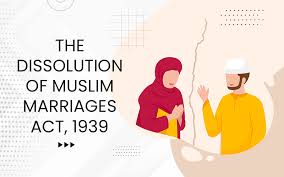Introduction:
In the complex tapestry of India’s legal landscape, the Muslim Marriage Act holds significant importance, governing the marital affairs of the Muslim community within the country. Rooted in historical and cultural contexts, this legislation has undergone several iterations, with the most notable being the Muslim Personal Law (Shariat) Application Act of 1937. This article aims to provide a comprehensive understanding of the Muslim Marriage Act, tracing its historical development, examining its key provisions, and discussing its contemporary implications in Indian society.
Historical Evolution:
The roots of the Muslim Marriage Act in India can be traced back to the colonial era when British rule necessitated the codification of personal laws for various religious communities. In 1937, the British Indian government enacted the Muslim Personal Law (Shariat) Application Act, which recognized the application of Islamic law in matters of personal status, including marriage, divorce, inheritance, and maintenance, among Muslims. This marked a significant departure from the uniform civil code approach and acknowledged the diversity of personal laws existing in India.
Key Provisions:
The Muslim Marriage Act, as embodied in the Muslim Personal Law (Shariat) Application Act of 1937, governs various aspects of Muslim marriage. One of its fundamental provisions is the recognition of nikah, the Islamic marriage contract, as the cornerstone of Muslim marriage. Under this Act, marriage is considered a civil contract, with specific conditions and requirements prescribed by Islamic law. These include the consent of parties, the presence of witnesses, and the payment of dower (mahr) to the bride.
Furthermore, the Act outlines the legal capacity of parties entering into marriage, specifying the age of marriage, mental capacity, and prohibition of certain degrees of relationship. It also delineates the rights and duties of spouses within the marital union, including maintenance, conjugal rights, and grounds for dissolution of marriage.
Contemporary Implications:
While the Muslim Marriage Act has provided a legal framework for Muslim marriages in India, its application and interpretation have been subject to debate and controversy. One of the key issues is the tension between personal laws based on religious principles and the principle of gender equality enshrined in the Indian Constitution.
Critics argue that certain provisions of the Act, such as unilateral divorce (talaq) and polygamy, are discriminatory and infringe upon women’s rights. These concerns have led to calls for reform and the implementation of a uniform civil code to ensure equality and justice for all citizens.
However, proponents of the Muslim Marriage Act contend that it is essential to respect the religious and cultural diversity of Indian society. They argue that any attempt to impose a uniform civil code would undermine the autonomy and religious freedom of minority communities, including Muslims.
Conclusion:
The Muslim Marriage Act, embodied in the Muslim Personal Law (Shariat) Application Act of 1937, represents a crucial aspect of India’s legal framework, governing Muslim marriages in the country. While it provides a mechanism for the recognition and regulation of Muslim marital relations, its implementation has been the subject of debate and controversy. As India continues to grapple with questions of personal law reform and secularism, the Muslim Marriage Act remains a focal point for discussions on religious freedom, gender equality, and legal pluralism in Indian society.






